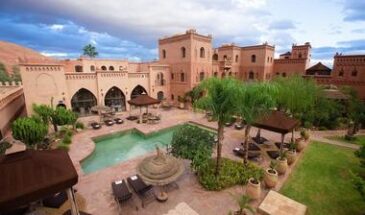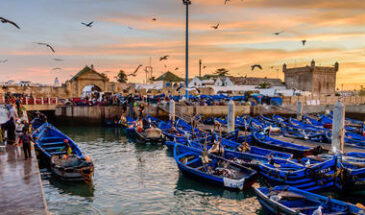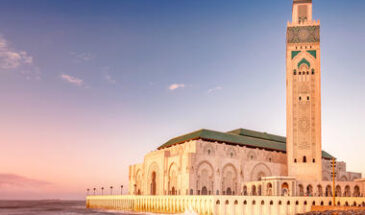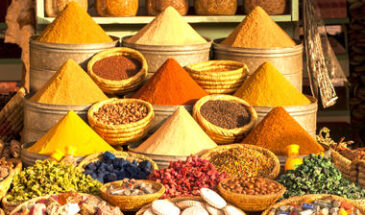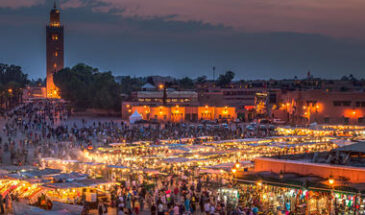- Trip Outline
- Trip Includes
- Trip Excludes
- Gallery
- Booking
- FAQ
Day 1
- CASABLANCA (DINNER)
Day 2
- CASABLANCA - RABAT - FES (BREAKFAST/LUNCH/DINNER)
Day 3
- FEZ – MEKNES – VOLUBILIS – FEZ (BREAKFAST/LUNCH/DINNER)
Day 4
- FES – IFRANE - MIDELT – ERFOUD - MERZOUGA (BREAKFAST/LUNCH/DINNER)
Day 5
- MERZOUGA – ERFOUD – TINGHIR – TODRA GORGE - OUARZAZATE (BREAKFAST/LUNCH/DINNER)
Day 6
- OUARZAZATE – AIT BEN HADDOU - MARRAKECH (BREAKFAST/LUNCH/DINNER)
Day 7
- MARRAKECH (BREAKFAST/LUNCH/DINNER)
Day 8
- MARRAKECH (BREAKFAST)
Itineraries
Day 1
ARRIVAL CASABLANCA
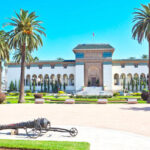
Arrival at Casablanca Mohamed V Airport, meet and greet by your guide and continue for a half day tour of Casablanca; including Mohammed V Square, United Nations Square, Protectorate Square, the Royal Palace gates, and the inside visit of the Hassan II Mosque. End of the day, transfer to hotel for check-in, dinner and overnight.
Day 2
CASABLANCA - RABAT - FES
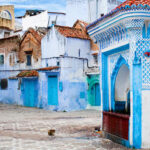
Breakfast at the hotel, departure to Fez, passing through Rabat, the Administrative Capital of the kingdom, the visit include: the Royal Palace (exterior view only), the great fortress Kasbah Oudayas, the Mohamed V Mausoleum, and the Hassan Tower. Lunch at Restaurant. Continuation to Fez. Check-in to the hotel, dinner and overnight.
Day 3
FEZ – MEKNES – VOLUBILIS – FEZ

Breakfast at the hotel, morning departure to Volubilis to visit Roman Ruins followed by Meknes, one of the Capital City in the past. Lunch at Restaurant. Then, return back to Fes, half day will be dedicated to discover the spiritual capital of the country; visit of the Medersas: Bouanania, the fountain Nejjarine and the Karaouiyine mosque. Continue for photo stop at Borj Nord, Tanneries shop and free time shopping in Old Medina. End of the day, transfer back to hotel for dinner & overnight.
Day 4
FES – IFRANE - MIDELT – ERFOUD - MERZOUGA
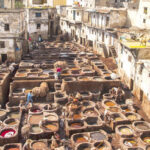
Breakfast at the hotel, then drive from Fez to Ifrane, which is a beautiful mountain town, often called as the Switzerland of Morocco. Stop near the cedar forest in the central Atlas Mountains, where you can watch the monkeys enjoy their freedom. Then visit the town of Midelt famous for its minerals and cool weather in summer. Lunch at Restaurant. Travel along the Ziz Valley, then visit Erfoud and its fossil products. Pick up by 4x4 for transfer to Merzouga. Have dinner and spend the night at the hotel.
Day 5
MERZOUGA – ERFOUD – TINGHIR – TODRA GORGE - OUARZAZATE
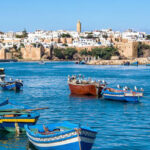
Early wake-up and take the dromedary for a walk to attend the sunrise in the sand dunes of Merzouga; Return to the hotel breakfast. Take 4x4 to Erfoud to meet the driver and drive to Ouarzazate. Travel along a scenic route to reach Ouarzazate, the capital of dates. You will pass the picturesque and densely planted palm grove of Skoura and continue to the Valley of a Thousand Kasbahs. From Skoura, you will drive east towards Kelaa El Mgouna. The Valley of Roses (main growing season between April and mid-May). (It does not have the largest cultivation of Persian roses. You will reach the impressive Dades Valley with its high limestone cliffs, beautiful palm trees and the narrow river. Lunch at Restaurant. Then continue and venture into the Todra Gorges to admire its gigantic rock walls and it’s even more impressive palm trees grove that hides a flowing river. Arrival Ouarzazate, check in to the hotel, dinner and overnight.
Day 6
OUARZAZATE – AIT BEN HADDOU - MARRAKECH

Breakfast at the hotel. Discover the secrets of Ouarzazate. Your sightseeing tour will include a visit to the Kasbah of Taourirt. Travel through the impressive Atlas Mountains to reach the exciting and exotic city of Marrakech. Along the way, you will stop at the fortified village of Ait Ben Haddou, the most exotic and best- preserved Kasbah in the entire Atlas region. As you pass the Tizi n'Tichka pass, the highest in the region at 2,260 meters, you will stop to marvel at the views and take some pictures. Free time in Kasbah Ait Ben Haddou. Lunch at Restaurant. Then continue to Marrakech, check-in to the hotel, dinner and overnight.
Day 7
MARRAKECH FULL DAY
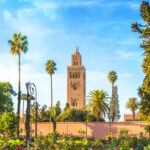
Breakfast at the hotel, full day devoted to visit Marrakech, the Red City. The visit includes: the Majorelle Gardens (entrance), the Koutoubia Mosque, the Menara Gardens, and the Bahia Palace (entrance). Lunch at Restaurant. Continuation in the afternoon with the souks and neighborhoods of the artisans, who show a variety of subjects. Finish the visit with a stop at the famous Djemaa El Fna Square and take advantage of its animation. Return to hotel, dinner and overnight.
Day 8
MARRAKECH - DEPARTURE

Breakfast at the hotel and check-out. Transfer on time to the airport for the return flight. * The client normally needs to be at the airport 3 hours before the departure flight.
- Welcome and assistance upon arrival by the staff or Jimspeco Travel Rep.
- Transportation for the entire program
- Visa Assistant
- 07 nights’ accommodation in half board (Breakfast and Dinner)
- 06 lunches restaurants
- English-Speaking guide available for the entire program
- City Guide for city visit from 20 pax and above
- Entrance fees to the monuments
(Hassan II Mosque / Volubilis / Bou Inania Madrasa / Kasbah Taourirt / Bahia Palace / Majorelle Garden) - 1 bottle of water per person per day on the bus
- 4x4 transfer to the dunes + 1 camel ride
- PCR TEST
- International Flight Ticket
- Water at the Hotel
- Tips
- Porters at airport and hotel
- Drinks at meals
- Personal expenses
- Any other service not mentioned above
An exotic fusion of Southern Mediterranean, Arabic and African influences, Morocco is an enticing combination of ancient cities and Roman ruins, sweeping deserts and centuries-old medinas, mosques and minarets, winding alleyways and vibrant markets, gorgeous beaches and rugged mountains. The Imperial Cities of Fes, Marrakech, Meknes and Rabat have all had a stint as the national capital and are liberally studded with attractions, including a plethora of ancient architecture, museums and souks (markets). The coastal city of Casablanca boasts one of the largest mosques in the world, while Tangier, on the Mediterranean coast, features some beautiful bays and sandy coves. Visitors can look forward to sampling exotic Berber cuisine, sipping on a fresh cup of coffee or a mint tea at a StreetSide An exotic fusion of Southern Mediterranean, Arabic and African influences, Morocco is an enticing combination of ancient cities and Roman ruins, sweeping deserts and centuries-old medinas, mosques and minarets, winding alleyways and vibrant markets, gorgeous beaches and rugged mountains. The Imperial Cities of Fes, Marrakech, Meknes and Rabat have all had a stint as the national capital and are liberally studded with attractions, including a plethora of ancient architecture, museums and souks (markets). The coastal city of Casablanca boasts one of the largest mosques in the world, while Tangier, on the Mediterranean coast, features some beautiful bays and sandy coves. Visitors can look forward to sampling exotic Berber cuisine, sipping on a fresh cup of coffee or a mint tea at a Street Side café, hike Toubkal - North Africa’s highest peak or enjoy camel trekking in the desert., hike Toubkal - North Africa’s highest peak or enjoy camel trekking in the desert.
Travel insurance should be obtained before leaving your country of origin. We don’t force anyone to purchase it. Local hospitals have limited diagnostic capability. Private clinics can be expensive, evacuation can cost a lot, luggage can disappear, so insurance is a good idea.
The high-speed toll roads connecting Tangier, Rabat, Casablanca, Meknes, Fes, Marrakech and El Jadida are of excellent quality. Coastal communities and most large towns are also well served by good roads. In the interior, south of the High Atlas Mountains, road travel becomes much more difficult, especially across the Atlas Mountains in winter.
International and local car hire companies have offices in major towns, cities and airports. Car hire is generally expensive, and prices vary with the season. The minimum age for driving a hired car is 18, although many hire companies will require drivers to be 21 or over.
Metered petit taxis are available in major towns. Taxi drivers are not usually tipped, although it is common to round fares up at least to the next dirham on short trips. Larger, grand taxis are usually Mercedes cars, used for travel outside medinas and to areas outside towns. These can be shared, but fares should be agreed before departure as they don't have meters.
Bike hire is available in most major towns - although attempting to cycle through city traffic is inadvisable. For those travelling longer distances, bikes can be transported on trains and buses.
Making use of the extensive bus network is the cheapest and most popular way to get around Morocco. Buses serve most communities, and private operators compete for custom on the more popular routes. The major bus companies are Compagnie de Transports Marocains (www.ctm.ma), Trans Ghazala (0536 685 387), and ONCF (www.oncf.ma). There are extensive bus services in Casablanca and other main towns. Pre-purchase tickets are sold.
Traffic drives on the right in Morocco and the wearing of seatbelts is compulsory. The speed limit is 40kph (25mph) in cities and built up areas, rising to 80km (50mph) on more major roads, up to 120km (75mph) on motorways. No alcohol at all is allowed in the bloodstream when driving.
Foreign driving licences are accepted, as well as International Driving Permits. Third Party insurance is required. Insurance documentation and a licence must be carried with you at all times. Insurance can be arranged locally.
The Moroccan rail system, run by Office National des Chemins de Fer (ONCF) (www.oncf.ma) provides regular services. The network runs from Oujda in the northeast to Casablanca on the west coast, Tangier on the north coast and Fes and Marrakech in the interior. However, only a small part of the country is served, and even large centers such as Agadir and Essaouira are not covered.
Water sources outside main cities and towns may be contaminated and sterilization is advisable. Bottled water is the best bet and is available everywhere. Milk is unpasteurized, so boil before drinking. Meat and fish should be freshly cooked and served hot. Vegetables are typically served cooked. If eating fruit, try to stick to fruit that can be peeled before eating. Most produce is grown organically, without chemical pesticides or fertilizers but it’s highly likely to have been washed in unsterilized water.
Fusion isn't a new trend in Morocco, where the cuisine is a blend of Mediterranean, Arabic, Jewish, Persian, West African and Berber influences. Meals range from the differ, an elaborate multicourse feast featuring couscous and grilled meats, to quick brochettes (kebab) from a roadside stall. Produce is seasonal, grown locally and typically without chemical pesticides or fertilizers.
Tagines, the fragrant stews of meat, vegetables or fish, named after the distinctive conical earthenware vessel they’re cooked in are the Moroccans main staple. Flavours revolve around a subtle array of spices, and traditionally every spice shop would have its own secret ras el hanout spice blend recipe.
Restaurants range from buffet diners to high-end establishment serving gourmet fare. Many now offer à la carte menus and a three-course fixed-price menu is still common at dinner. Restaurants in cities and large resorts are cosmopolitan, offering a good selection of cuisines, including typical Moroccan fare, plus French, Italian, Spanish and fusion dishes.
The best way to experience the true flavour of Moroccan cuisine, however, is to sample the street food. Djemaa el Fna square in the center of Marrakech sees an explosion of pop-up food stalls after dark, and most other cities have their own foodie quarters. Scrumptious local specialties such as almonds, olives and a rainbow array of spices can be found in souks across the country.
Laws on alcohol are fairly liberal (for non-Muslim visitors) and bars in most tourist areas stay open late. Wines, beers and spirits are available to tourists. Muslims are forbidden to drink alcohol. By law, no-one is allowed to drink alcohol in view of a mosque or during Ramadan, although tourist establishments sometimes flout this rule. Locally produced wines, beers and mineral waters are reasonably priced, but imported drinks tend to be expensive.
Tipping waiting staff is expected (if service is satisfactory), usually up to 5 dirhams on small bills, and around 10% for larger bills.
Morocco’s climate is very diverse, varying with the season and region. In general the country has a tropical climate, with temperatures reaching as high as 35°C (95°F) and as low as 5°C (41°F) in the Sahara. The coast has a warm, Mediterranean climate tempered on the eastern coast by southwest trade winds whilst inland areas have a hotter, drier, continental climate. In the south of the country, the weather is very hot and dry throughout most of the year, though temperatures can drop dramatically at night, especially in the months of December and January.
Rain falls from November to March in coastal areas, and the country is mostly dry with high temperatures in summer and a cooler climate in the mountains. Marrakech and Agadir enjoy an average temperature of 21°C (70ºF) during the winter.
Owing to the relatively high winter temperatures, and summers that are dry rather than unbearably humid, Morocco is an all-year round destination. If you really want to avoid the heat, the best time to visit is during the shoulder seasons of April to May, and September to November.
Daytime temperatures can be quite warm. You will need comfortable, loose, cool clothing. Evenings can be cool. Bring a jacket or lightweight cover-up. Most hotel rooms will have air conditioning, but not all. Desert temperatures fluctuate from cold at night to very hot in the day, but you will need to be covered to prevent sunburn. If you are sleeping in a tent, we will provide extra blankets.
Bring sunglasses and head covering. Sunscreen may be purchased once you arrive. Bring comfortable shoes for walking.
Moroccans value modesty. Please respect the culture and do not wear clothing that exposes a lot of skin. Long sleeves and long pants or skirts are appropriate for most places you visit. We will visit both of the historical mosques that allow visitors.
Electrical sockets (outlets) in Morocco are one of the two European standard electrical socket types: The "Type C" Europlug and the "Type E" and "Type F" Schuko. If your appliance's plug doesn't match the shape of these sockets, you will need a travel plug adapter in order to plug in. Travel plug adapters simply change the shape of your appliance's plug to match whatever type of socket you need to plug into. If it's crucial to be able to plug in no matter what, bring an adapter for all three types.
Electrical sockets (outlets) in the Kingdom of Morocco usually supply electricity at between 220 and 240 volts AC. If you're plugging in an appliance that was built for 220-240 volt electrical input, or an appliance that is compatible with multiple voltages, then an adapter is all you need.
But travel plug adapters do not change the voltage, so the electricity coming through the adapter will still be the same 220-240 volts the socket is supplying. North American sockets supply electricity at between 110 and 120 volts, far lower than in most of the rest of the world. Consequently, North American appliances are generally built for 110-120 volts.
Internet cafes are widely popular in Morocco, making it easy for visitors to access the internet. Internet Café’s generally open early and close late, and usually charge approximately 3-6 Dirhams per hour. Many hotels also offer wireless access.
While tipping isn’t mandatory in Morocco, rounding up the bill and leaving spare change at restaurants and cafes is generally standard practice. Taxi drivers and porters will also accept tips, 10 dirham is usually sufficient in this case.
Yes, almost…the only sites off-limits to visitors are places of worship. Hubert Lyautey, Marshal of France at the time of its protectorate, forbade access to mosques and places of worship to non-Muslims. This rule has remained in place since.
There is one exception and not a small one! The spectacular Hassan II mosque in Casablanca should not be missed! You should meanwhile avoid holy days (Fridays) and religious ceremonies (Ramadan, Eid al-Adha, etc)
Although a predominantly Muslim country, Morocco is not dry. Alcohol is available in restaurants, liquor stores, bars, supermarkets, clubs, hotels, and discos. Some Moroccans enjoy a drink although it is disapproved in public places. The local brew of choice carries the highly original name of Casablanca Beer.





